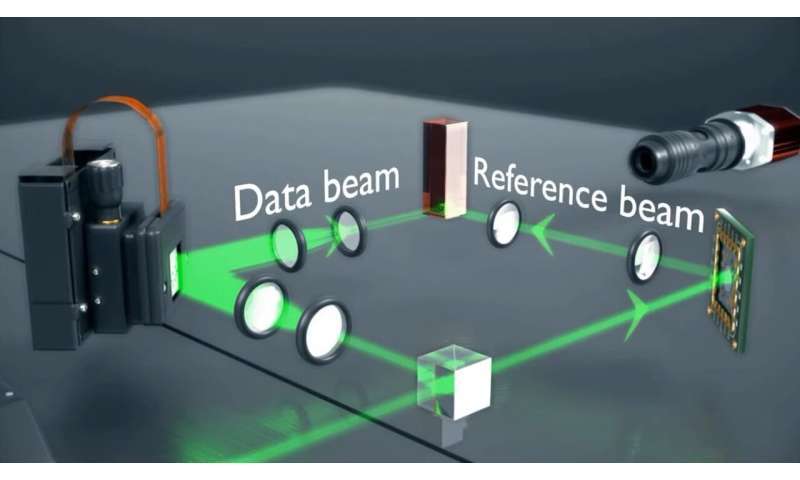
When people think of holograms, they may think of the small insignia on credit cards that appear to move as you rotate the card. Or they may think of recent rock concert spectacles featuring realistic 3-D performances by singers who are no longer alive. Whitney Houston, Roy Orbison, Tupac Shakur, Buddy Holly and Ronnie James Dio drew rave reviews from fans in ‘live’ performances made possible by holography even though they all have been dead for years.
Holograms consist of a series of special types of image created by laser using diffraction to project a three-dimensional image, preserving depth and parallax aspects of the original image.
Invented by a Hungarian physicist Dennis Gabor in the 1940s, the technology is now playing a key role in efforts to create new modes of storage in an era in which global digital content is growing exponentially.
In view of ever greater storage demands, Microsoft’s AI research labs at Cambridge partnered with colleagues at cloud storage giant Azure to rethink storage solutions based on holography.
The initiative—Project HSD (Holographic Storage Device)—was announced at Microsoft’s virtual Ignite 2020 conference this week.
The project continues on the work begun under Project Silica in 2017, at which time Microsoft explained that traditional cloud storage methods are no longer sufficient to keep up with skyrocketing storage needs.
“The demand for long-term data storage in the cloud is reaching unprecedented levels, and continues to grow into the zettabytes,” Microsoft said. “Existing storage technologies do not provide a cost-effective solution for storing long-lived data. Operating at such scales in the cloud requires a fundamental re-thinking of how we build large-scale storage systems, as well as the underlying storage technologies that underpin them.”
Microsoft said this week that current storage technologies are not improving at a sufficient pace and that they also “face reliability and performance challenges due to the mechanical moving parts in hard disk drives and the declining endurance of flash cells.”
Advances in optical technologies such as smartphone cameras and the expansion and development of cloud storage systems open up opportunities through holographic solutions, Microsoft said.
“Growth in demand for cloud storage has highlighted the need to rethink our storage systems from the media up,” Microsoft said.
Holography promises extraordinary improvements in storage capacity because for the first time, storage media will not be restricted to two surfaces of a storage disk but, rather, will take advantage of the volume of the media used.
Holographic storage uses an optical crystal to read and write data. Using the entire volume of the crystal, an enormous number of data sets can be stored. Erasing is easily accomplished through the use of UV light. Researchers say this is more efficient than flash devices, which not only are more expensive but have limited read and write capacities. It also is superior to hard drives that depend on movable parts subject to wear and tear.
“The hologram occupies a small volume inside the crystal, which we think of as a zone, and multiple pages can be recorded in the same physical volume or zone,” Microsoft said. Recent software improvements achieved through AI allowing for one-to-one pixel matching, for instance, mean simpler and less expensive optics can be used to achieve even better results than before.
So far, Microsoft Research says it has attained a near doubling of density in holographic storage tests, and that it expects improved compression and faster access rates in the coming months.
The Project HSD team is composed of experts in physics, optics, machine learning and storage systems. It is part of the Optics for the Cloud group at Microsoft Research Cambridge, which is exploring storage solutions based on cloud and optic technologies.
www.microsoft.com/en-us/resear … c-storage-solutions/